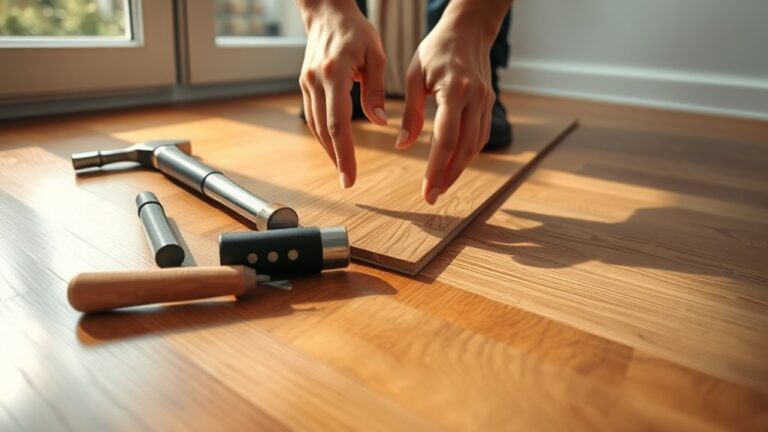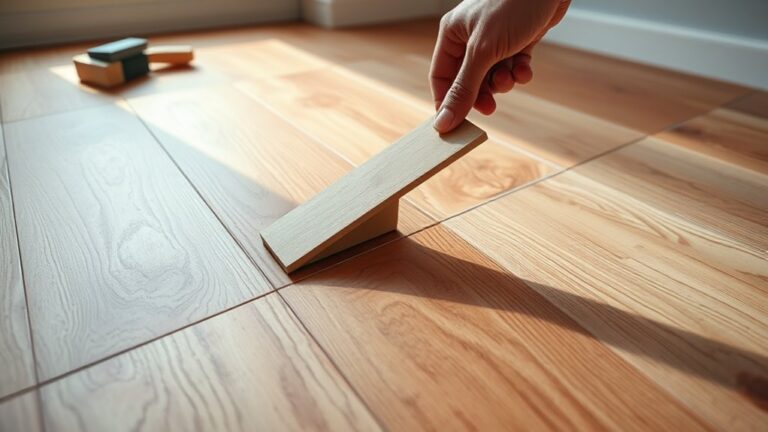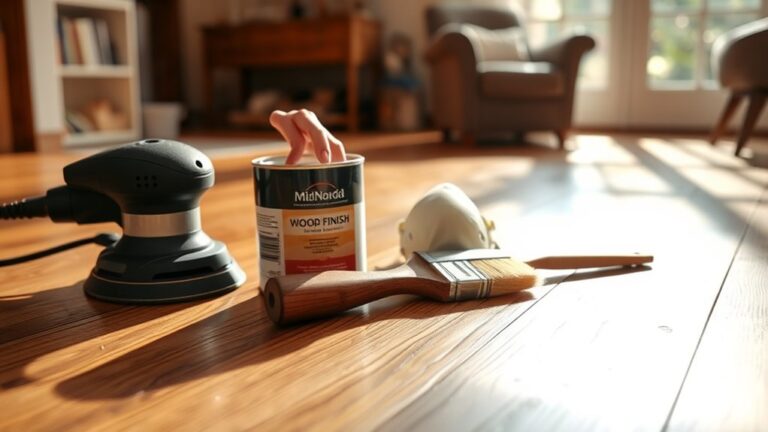Your floor creaks when you walk because wood and fasteners beneath are shifting due to natural expansion, contraction, or loosening over time. Age and settling of your home cause fasteners to loosen, allowing movement between floorboards and the subfloor. Changes in humidity and temperature also make wood expand or contract unevenly, producing noise. Structural issues like damaged joists or subfloor gaps can intensify creaks. Understanding these factors helps you identify causes and consider effective solutions.
Common Causes of Floor Creaking
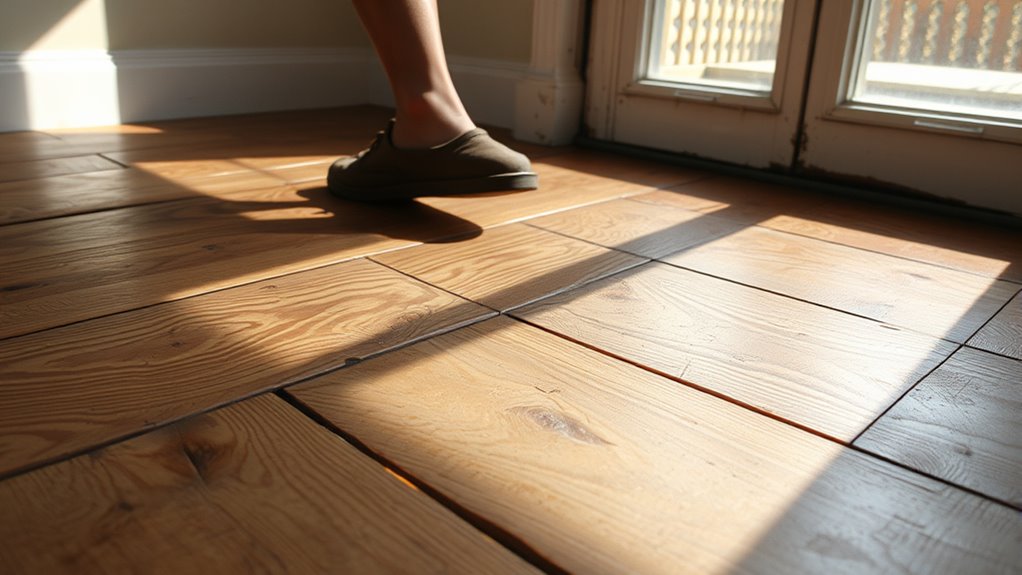
Although floor creaking can be caused by various factors, the most common causes relate to the interaction between the subfloor, joists, and fasteners. When different wood types expand or contract at varying rates, movement occurs at their interfaces, producing noise. If the fastener quality is substandard, nails or screws may loosen over time, allowing the subfloor to shift against the joists. This shifting generates friction, resulting in creaks. Additionally, improper fastening patterns or insufficient fasteners can permit excessive movement. Understanding these mechanical interactions enables you to identify potential weak points in your floor’s construction. By selecting compatible wood types and ensuring the use of high-quality fasteners, you gain control over minimizing creaking and maintaining a stable, quiet floor. This technical approach supports your freedom to enjoy a peaceful living space.
How Age and Settling Affect Your Floors
As your home ages, the natural settling of its structure exerts gradual stress on the 床材 system, altering the alignment of joists and subfloor panels. Over time, this shifting can loosen fasteners and create gaps between building materials, directly contributing to creaking sounds. When you neglect floor maintenance, these small changes accumulate, affecting stability and increasing noise during movement. Different building materials respond uniquely: wood expands or contracts, while engineered materials may lose integrity at joints. By understanding how age and settling influence your floors, you’ll recognize that creaking isn’t merely a nuisance but a sign of mechanical changes within the structure. Addressing these issues early through targeted maintenance can preserve your floor’s performance and your freedom to move quietly throughout your home.
Impact of Humidity and Temperature Changes
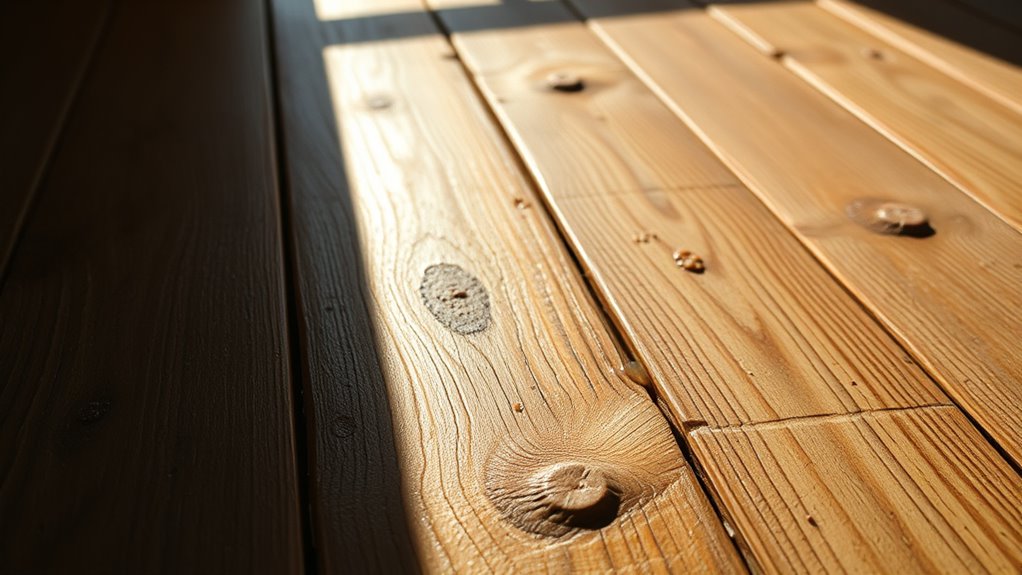
Beyond the structural shifts caused by aging and settling, environmental factors like humidity and temperature fluctuations play a significant role in floor creaking. When humidity levels rise, wood absorbs moisture and expands; conversely, it contracts as humidity drops. These humidity effects cause the floorboards to shift against each other or their fasteners, generating creaks. Similarly, temperature fluctuations induce dimensional changes in flooring materials, exacerbating joint movement. The combination of swelling and shrinking stresses nails, screws, and adhesives, loosening connections over time. If your home experiences wide seasonal variations, you’ll likely notice increased floor noise during changing periods. Understanding how moisture and thermal cycles impact your floors helps you anticipate creaking and consider humidity control solutions, such as dehumidifiers or improved ventilation, to maintain floor stability and reduce noise.
Identifying Structural Issues Behind Floor Noises
Three primary structural issues often cause persistent floor noises: loose fasteners, damaged subflooring, and compromised joists. When you’re identifying structural issues behind floor noises, focus on these key areas to understand the cause and assess your floor’s structural integrity.
- Loose Fasteners: Nails or screws that have loosened allow floorboards to shift against each other, creating creaks as you walk.
- Damaged Subflooring: Cracks or warping in the subfloor reduce support, causing uneven pressure and noise.
- Compromised Floor Joists: If joists are cracked, rotted, or improperly spaced, they fail to provide stable support, directly impacting structural integrity and causing movement noises.
Careful inspection of these components will help you pinpoint the source of creaks tied to your floor’s structure.
Simple Fixes to Reduce or Eliminate Floor Creaks
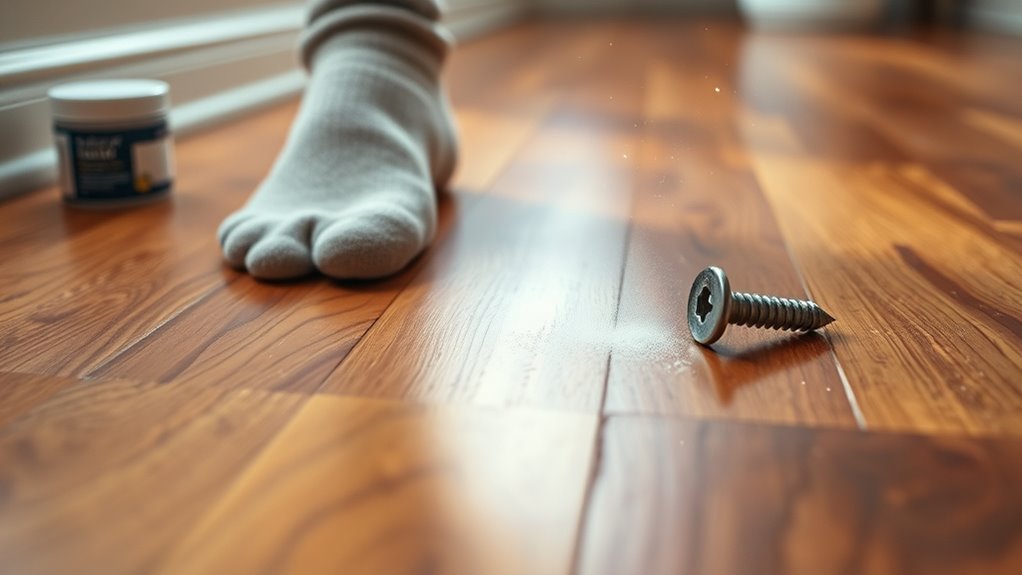
Understanding the structural causes of floor creaks gives you a clear starting point for applying effective solutions. To reduce squeaky floors, begin by tightening loose floorboards using screws or nails to secure them firmly to the joists. You can also apply powdered graphite or talcum powder between floorboards to minimize friction causing noise. For subfloor gaps, inserting shims or wood wedges can stabilize movement and prevent creaking. Regular floor maintenance, including inspecting joists and replacing damaged fasteners, is essential to prolong noise reduction. Additionally, consider using construction adhesive beneath squeaky areas to bond layers and eliminate movement. These targeted, technical approaches help you tackle floor creaks efficiently, restoring structural integrity and granting you the freedom from persistent floor noises.


